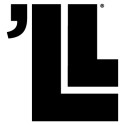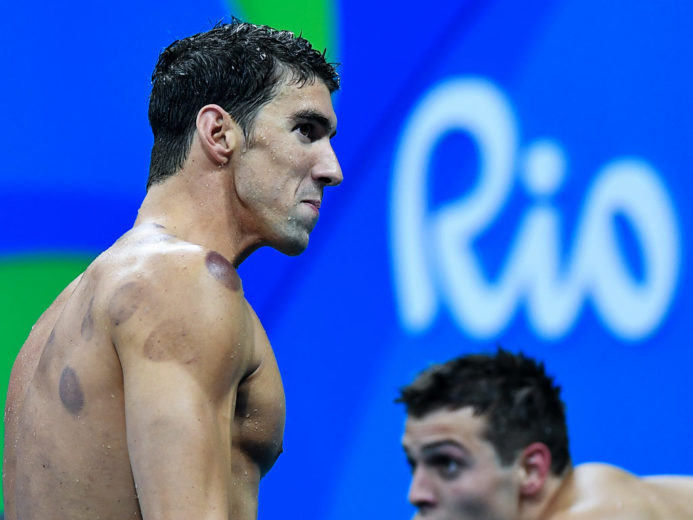The Rio Olympic games have already provided us with several Internet frenzy moments, from Gisele’s catwalk, to Tonga flag bearer Pita Tuafatofua and the latest…those strange round marks on Michael Phelps body as he made more Olympic history in the mens 400 freestyle event. As it so happens Phelps was utilizing a therapeutic form called cupping, in addition to his rigorous training. Could cupping have been the game changer for Phelps? Could it be a game changer for you in your life and in your workouts? Let’s take a tour of what cupping is and what it could do for you.
What It Is
Cupping therapy is an alternative healing practice that uses cups to increase blood flow to the skin. The cups used in this therapeutic procedure are made from a variety of materials including bamboo, glass and earthenware. Although many attribute this ancient form of medicine solely to the Chinese, other sources report that it can also be dated back to ancient Egyptian and Middle Eastern cultures.
How It Works
The suction effect of the cupping therapy brings blood to skin of a specific area of the body. This influx of “fresh” blood is said to improve circulation and draw toxins away from the body. Cumulative cupping, or cupping performed on a consistent basis, can lead to increased endurance, circulation and quicker recovery after intense workouts. There are two types of cupping therapy typically used: dry and wet.
Dry Cupping
Otherwise known as retention or suction-only cupping, is the basic form that uses a flaming procedure to heat the inside of the cup. The flame or burning substance is put out and immediately placed on the skin. As the air inside the cup cools, it produces a vacuuming effect, causing blood to rush to the skins’ surface and the skin to redden and rise. Practitioners often combine application of medicines.
Wet Cupping
Also known as bleeding cupping, is generally a two-step process. The first step involves a practitioner using a scalpel or a triangle-edge needle to tap a point causing it to bleed. This is done just before placing the cup on your skin.
Other cupping techniques include Moving Cupping that involves the practitioner achieving suction then moving the cup in one direction. For example, lets say that the practitioner begins the cupping procedure on the mid-back, during moving cupping, they would glide the cup downward towards your lower back. The cup would then be removed and the process would be repeated. This would be similar to a technique, in massage therapy or physical therapy, termed myo-fascial release. Its’ purpose is to loosen any adhesions between the muscle and connective tissue to allow for freer movement. Empty Cupping involves immediately removing the cup after the suction; and Needle Cupping combines acupuncture with cupping done immediately after the needle is inserted into the skin.
Whether your undergo Wet or Dry Cupping, practitioners will often combine the cupping with the application of medications or herbs in order to augment the effectiveness of the treatment.
Read more of the Pro’s and Con’s of cupping after the jump.
The Pro’s
For those who have jumped into this healing technique there are a number of ailments it’s meant to heal. Cupping therapy has been found to help pain conditions, herpes zoster, couch, and trouble breathing. Cupping therapy has been used to treat various conditions including:
Conditions Treated
• Skin problems (acne, eczema)
• Anxiety
• Excess Heat conditions(fever, stress)
• Colds and Upper respiratory infections
• Arthritis
• Plantar fasciitis (pain in the bottom of the foot)
• Blood Disorders (anemia)
• Loosens or breaks adhesions (connective tissue that is stuck as a result of an injury)
• Detoxification
It is also said that it can increase physical relaxation and promote healing. Consider decades long career Phelps has had, he has sure to have put his body through the paces. This type of therapy could be effective in erasing the exercise side effects-soreness, inflammation, pain, etc.- and leave your ready for the next onslaught.
The Cons
Before you run out to your nearest alternative healing clinic, let’s quickly review some of the risks.
• Mild discomfort: this stems from the stretch the skin goes under when the cupping is being performed.
• Burns: These can occur from whatever materials are being used as the accelerant for the flame. If it is not extinguished prior to applying the cup to the body, the skin may be burned.
• Skin infection: This side effect can occur when the acupuncture or bleeding procedures are used. Proper care, pre and post procedure, must be taken to insure the reduced risk of infection
• Bruising: This is the most frequent side effect. The main purpose of cupping to increase blood flow to a specific area of the body. That means that capillaries will become engorged to the point of rupturing. The results in bruising.
Like with every other training technique, supplement, or treatment it is good to know if there has been research to support its effects. Although there have been a number of studies done on cupping, there is not a substantial amount of evidence to either prove or disprove its benefits. If you do consider trying it, make sure that your practitioner is a licensed Traditional Chinese Medicine (TCM) practitioner or Acupuncturist.

